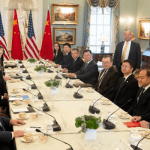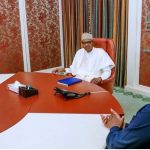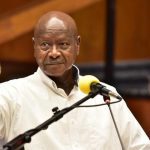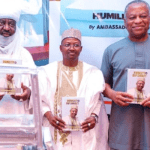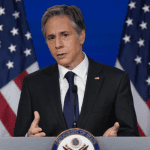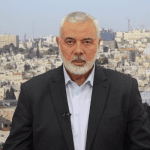United States Secretary of State Antony Blinken has met with his Chinese counterpart Qin Gang in Beijing at the start of the highest-level trip by a US official to China in nearly five years as the two powers aim to stabilise ties.
Blinken’s two-day trip on Sunday comes amid frosty bilateral ties and follows the discovery of a suspected spy balloon above the US in February that prompted him to delay a trip that had been planned for the same month.
With the world’s two largest economies at odds on an array of issues from trade to technology and regional security, both China and the US have voiced guarded hopes of improving communication, although they have played down expectations of a significant breakthrough.
US President Joe Biden played down the balloon episode as Blinken was heading to China, saying: “I don’t think the leadership knew where it was and knew what was in it and knew what was going on.”
“I think it was more embarrassing than it was intentional,” Biden told reporters on Saturday.
Biden said he hoped to again meet Chinese President Xi Jinping after a lengthy meeting in November on the sidelines of a Group of 20 (G20) summit in Bali, where the two agreed on Blinken’s visit.
“I’m hoping that, over the next several months, I’ll be meeting with Xi again and talking about legitimate differences we have but also how there’s areas we can get along,” Biden said.
The two leaders are likely to attend the next G20 summit, in September in New Delhi, and Xi has been invited to travel to San Francisco in November when the US hosts leaders from the Asia-Pacific Economic Cooperation (APEC) grouping.
Blinken is expected to meet top Chinese officials and attend a banquet at the state guesthouse in the Diaoyutai gardens.
A phone call between Blinken and his Chinese counterpart Qin Gang underlined the heightened tension between the two sides.
But expectations of any breakthrough from the visit are very low, Yu added.
“But that doesn’t mean that it is not significant, especially as China’s neighbours are very worried that the relationship has gone so bad that there is a danger of tensions spiralling out of control into some sort of open conflict,” Yu said.
Ties between Beijing and Washington have deteriorated across the board, raising the spectre that the two might one day clash militarily over the self-ruled island of Taiwan, which China claims as its own.
They are also at odds over issues ranging from trade, US efforts to hold back China’s semiconductor industry and Beijing’s human rights track record.
Particularly alarming for China’s neighbours has been its reluctance to engage in regular military-to-military talks with Washington, despite repeated attempts for dialogue from the US.
Speaking at a press conference on Friday before he left for Beijing, Blinken said his trip had three main objectives: Setting up mechanisms for crisis management, advancing US and allies’ interests as well as speaking directly about related concerns, and exploring areas of potential cooperation.
“If we want to make sure, as we do, that the competition that we have with China doesn’t veer into conflict, the place you start is with communicating,” Blinken said.
The US has also been keeping its allies close, with Blinken speaking by telephone with his counterparts from Japan and South Korea during his 20-hour journey across the Pacific.
Biden’s national security adviser, Jake Sullivan, also travelled to Tokyo for separate three-way meetings involving Japan, South Korea and the Philippines.
In recent months, the US has reached deals on troop deployments in southern Japan and the northern Philippines, both strategically close to Taiwan.
Blinken before departure also met in Washington with his counterpart from ally Singapore, a US ally, who voiced hope the US would stay as a power but also find ways to coexist with a rising China.
Blinken’s “trip is essential, but not sufficient”, Singapore’s foreign minister Vivian Balakrishnan said.
“There are fundamental differences in outlook, in values. And it takes time for mutual respect and strategic trust to be built in.”
Blinken is the first top US diplomat to visit Beijing since a stop in 2018 by his predecessor Mike Pompeo, who later championed no-holds-barred confrontation with China in the final years of Donald Trump’s presidency.
United States Secretary of State Antony Blinken has met with his Chinese counterpart Qin Gang in Beijing at the start of the highest-level trip by a US official to China in nearly five years as the two powers aim to stabilise ties.
Blinken’s two-day trip on Sunday comes amid frosty bilateral ties and follows the discovery of a suspected spy balloon above the US in February that prompted him to delay a trip that had been planned for the same month.
With the world’s two largest economies at odds on an array of issues from trade to technology and regional security, both China and the US have voiced guarded hopes of improving communication, although they have played down expectations of a significant breakthrough.
US President Joe Biden played down the balloon episode as Blinken was heading to China, saying: “I don’t think the leadership knew where it was and knew what was in it and knew what was going on.”
“I think it was more embarrassing than it was intentional,” Biden told reporters on Saturday.
Biden said he hoped to again meet Chinese President Xi Jinping after a lengthy meeting in November on the sidelines of a Group of 20 (G20) summit in Bali, where the two agreed on Blinken’s visit.
“I’m hoping that, over the next several months, I’ll be meeting with Xi again and talking about legitimate differences we have but also how there’s areas we can get along,” Biden said.
The two leaders are likely to attend the next G20 summit, in September in New Delhi, and Xi has been invited to travel to San Francisco in November when the US hosts leaders from the Asia-Pacific Economic Cooperation (APEC) grouping.
Blinken is expected to meet top Chinese officials and attend a banquet at the state guesthouse in the Diaoyutai gardens.
A phone call between Blinken and his Chinese counterpart Qin Gang underlined the heightened tension between the two sides.
But expectations of any breakthrough from the visit are very low, Yu added.
“But that doesn’t mean that it is not significant, especially as China’s neighbours are very worried that the relationship has gone so bad that there is a danger of tensions spiralling out of control into some sort of open conflict,” Yu said.
Ties between Beijing and Washington have deteriorated across the board, raising the spectre that the two might one day clash militarily over the self-ruled island of Taiwan, which China claims as its own.
They are also at odds over issues ranging from trade, US efforts to hold back China’s semiconductor industry and Beijing’s human rights track record.
Particularly alarming for China’s neighbours has been its reluctance to engage in regular military-to-military talks with Washington, despite repeated attempts for dialogue from the US.
Speaking at a press conference on Friday before he left for Beijing, Blinken said his trip had three main objectives: Setting up mechanisms for crisis management, advancing US and allies’ interests as well as speaking directly about related concerns, and exploring areas of potential cooperation.
“If we want to make sure, as we do, that the competition that we have with China doesn’t veer into conflict, the place you start is with communicating,” Blinken said.
The US has also been keeping its allies close, with Blinken speaking by telephone with his counterparts from Japan and South Korea during his 20-hour journey across the Pacific.
Biden’s national security adviser, Jake Sullivan, also travelled to Tokyo for separate three-way meetings involving Japan, South Korea and the Philippines.
In recent months, the US has reached deals on troop deployments in southern Japan and the northern Philippines, both strategically close to Taiwan.
Blinken before departure also met in Washington with his counterpart from ally Singapore, a US ally, who voiced hope the US would stay as a power but also find ways to coexist with a rising China.
Blinken’s “trip is essential, but not sufficient”, Singapore’s foreign minister Vivian Balakrishnan said.
“There are fundamental differences in outlook, in values. And it takes time for mutual respect and strategic trust to be built in.”
Blinken is the first top US diplomat to visit Beijing since a stop in 2018 by his predecessor Mike Pompeo, who later championed no-holds-barred confrontation with China in the final years of Donald Trump’s presidency.
United States Secretary of State Antony Blinken has met with his Chinese counterpart Qin Gang in Beijing at the start of the highest-level trip by a US official to China in nearly five years as the two powers aim to stabilise ties.
Blinken’s two-day trip on Sunday comes amid frosty bilateral ties and follows the discovery of a suspected spy balloon above the US in February that prompted him to delay a trip that had been planned for the same month.
With the world’s two largest economies at odds on an array of issues from trade to technology and regional security, both China and the US have voiced guarded hopes of improving communication, although they have played down expectations of a significant breakthrough.
US President Joe Biden played down the balloon episode as Blinken was heading to China, saying: “I don’t think the leadership knew where it was and knew what was in it and knew what was going on.”
“I think it was more embarrassing than it was intentional,” Biden told reporters on Saturday.
Biden said he hoped to again meet Chinese President Xi Jinping after a lengthy meeting in November on the sidelines of a Group of 20 (G20) summit in Bali, where the two agreed on Blinken’s visit.
“I’m hoping that, over the next several months, I’ll be meeting with Xi again and talking about legitimate differences we have but also how there’s areas we can get along,” Biden said.
The two leaders are likely to attend the next G20 summit, in September in New Delhi, and Xi has been invited to travel to San Francisco in November when the US hosts leaders from the Asia-Pacific Economic Cooperation (APEC) grouping.
Blinken is expected to meet top Chinese officials and attend a banquet at the state guesthouse in the Diaoyutai gardens.
A phone call between Blinken and his Chinese counterpart Qin Gang underlined the heightened tension between the two sides.
But expectations of any breakthrough from the visit are very low, Yu added.
“But that doesn’t mean that it is not significant, especially as China’s neighbours are very worried that the relationship has gone so bad that there is a danger of tensions spiralling out of control into some sort of open conflict,” Yu said.
Ties between Beijing and Washington have deteriorated across the board, raising the spectre that the two might one day clash militarily over the self-ruled island of Taiwan, which China claims as its own.
They are also at odds over issues ranging from trade, US efforts to hold back China’s semiconductor industry and Beijing’s human rights track record.
Particularly alarming for China’s neighbours has been its reluctance to engage in regular military-to-military talks with Washington, despite repeated attempts for dialogue from the US.
Speaking at a press conference on Friday before he left for Beijing, Blinken said his trip had three main objectives: Setting up mechanisms for crisis management, advancing US and allies’ interests as well as speaking directly about related concerns, and exploring areas of potential cooperation.
“If we want to make sure, as we do, that the competition that we have with China doesn’t veer into conflict, the place you start is with communicating,” Blinken said.
The US has also been keeping its allies close, with Blinken speaking by telephone with his counterparts from Japan and South Korea during his 20-hour journey across the Pacific.
Biden’s national security adviser, Jake Sullivan, also travelled to Tokyo for separate three-way meetings involving Japan, South Korea and the Philippines.
In recent months, the US has reached deals on troop deployments in southern Japan and the northern Philippines, both strategically close to Taiwan.
Blinken before departure also met in Washington with his counterpart from ally Singapore, a US ally, who voiced hope the US would stay as a power but also find ways to coexist with a rising China.
Blinken’s “trip is essential, but not sufficient”, Singapore’s foreign minister Vivian Balakrishnan said.
“There are fundamental differences in outlook, in values. And it takes time for mutual respect and strategic trust to be built in.”
Blinken is the first top US diplomat to visit Beijing since a stop in 2018 by his predecessor Mike Pompeo, who later championed no-holds-barred confrontation with China in the final years of Donald Trump’s presidency.
United States Secretary of State Antony Blinken has met with his Chinese counterpart Qin Gang in Beijing at the start of the highest-level trip by a US official to China in nearly five years as the two powers aim to stabilise ties.
Blinken’s two-day trip on Sunday comes amid frosty bilateral ties and follows the discovery of a suspected spy balloon above the US in February that prompted him to delay a trip that had been planned for the same month.
With the world’s two largest economies at odds on an array of issues from trade to technology and regional security, both China and the US have voiced guarded hopes of improving communication, although they have played down expectations of a significant breakthrough.
US President Joe Biden played down the balloon episode as Blinken was heading to China, saying: “I don’t think the leadership knew where it was and knew what was in it and knew what was going on.”
“I think it was more embarrassing than it was intentional,” Biden told reporters on Saturday.
Biden said he hoped to again meet Chinese President Xi Jinping after a lengthy meeting in November on the sidelines of a Group of 20 (G20) summit in Bali, where the two agreed on Blinken’s visit.
“I’m hoping that, over the next several months, I’ll be meeting with Xi again and talking about legitimate differences we have but also how there’s areas we can get along,” Biden said.
The two leaders are likely to attend the next G20 summit, in September in New Delhi, and Xi has been invited to travel to San Francisco in November when the US hosts leaders from the Asia-Pacific Economic Cooperation (APEC) grouping.
Blinken is expected to meet top Chinese officials and attend a banquet at the state guesthouse in the Diaoyutai gardens.
A phone call between Blinken and his Chinese counterpart Qin Gang underlined the heightened tension between the two sides.
But expectations of any breakthrough from the visit are very low, Yu added.
“But that doesn’t mean that it is not significant, especially as China’s neighbours are very worried that the relationship has gone so bad that there is a danger of tensions spiralling out of control into some sort of open conflict,” Yu said.
Ties between Beijing and Washington have deteriorated across the board, raising the spectre that the two might one day clash militarily over the self-ruled island of Taiwan, which China claims as its own.
They are also at odds over issues ranging from trade, US efforts to hold back China’s semiconductor industry and Beijing’s human rights track record.
Particularly alarming for China’s neighbours has been its reluctance to engage in regular military-to-military talks with Washington, despite repeated attempts for dialogue from the US.
Speaking at a press conference on Friday before he left for Beijing, Blinken said his trip had three main objectives: Setting up mechanisms for crisis management, advancing US and allies’ interests as well as speaking directly about related concerns, and exploring areas of potential cooperation.
“If we want to make sure, as we do, that the competition that we have with China doesn’t veer into conflict, the place you start is with communicating,” Blinken said.
The US has also been keeping its allies close, with Blinken speaking by telephone with his counterparts from Japan and South Korea during his 20-hour journey across the Pacific.
Biden’s national security adviser, Jake Sullivan, also travelled to Tokyo for separate three-way meetings involving Japan, South Korea and the Philippines.
In recent months, the US has reached deals on troop deployments in southern Japan and the northern Philippines, both strategically close to Taiwan.
Blinken before departure also met in Washington with his counterpart from ally Singapore, a US ally, who voiced hope the US would stay as a power but also find ways to coexist with a rising China.
Blinken’s “trip is essential, but not sufficient”, Singapore’s foreign minister Vivian Balakrishnan said.
“There are fundamental differences in outlook, in values. And it takes time for mutual respect and strategic trust to be built in.”
Blinken is the first top US diplomat to visit Beijing since a stop in 2018 by his predecessor Mike Pompeo, who later championed no-holds-barred confrontation with China in the final years of Donald Trump’s presidency.
United States Secretary of State Antony Blinken has met with his Chinese counterpart Qin Gang in Beijing at the start of the highest-level trip by a US official to China in nearly five years as the two powers aim to stabilise ties.
Blinken’s two-day trip on Sunday comes amid frosty bilateral ties and follows the discovery of a suspected spy balloon above the US in February that prompted him to delay a trip that had been planned for the same month.
With the world’s two largest economies at odds on an array of issues from trade to technology and regional security, both China and the US have voiced guarded hopes of improving communication, although they have played down expectations of a significant breakthrough.
US President Joe Biden played down the balloon episode as Blinken was heading to China, saying: “I don’t think the leadership knew where it was and knew what was in it and knew what was going on.”
“I think it was more embarrassing than it was intentional,” Biden told reporters on Saturday.
Biden said he hoped to again meet Chinese President Xi Jinping after a lengthy meeting in November on the sidelines of a Group of 20 (G20) summit in Bali, where the two agreed on Blinken’s visit.
“I’m hoping that, over the next several months, I’ll be meeting with Xi again and talking about legitimate differences we have but also how there’s areas we can get along,” Biden said.
The two leaders are likely to attend the next G20 summit, in September in New Delhi, and Xi has been invited to travel to San Francisco in November when the US hosts leaders from the Asia-Pacific Economic Cooperation (APEC) grouping.
Blinken is expected to meet top Chinese officials and attend a banquet at the state guesthouse in the Diaoyutai gardens.
A phone call between Blinken and his Chinese counterpart Qin Gang underlined the heightened tension between the two sides.
But expectations of any breakthrough from the visit are very low, Yu added.
“But that doesn’t mean that it is not significant, especially as China’s neighbours are very worried that the relationship has gone so bad that there is a danger of tensions spiralling out of control into some sort of open conflict,” Yu said.
Ties between Beijing and Washington have deteriorated across the board, raising the spectre that the two might one day clash militarily over the self-ruled island of Taiwan, which China claims as its own.
They are also at odds over issues ranging from trade, US efforts to hold back China’s semiconductor industry and Beijing’s human rights track record.
Particularly alarming for China’s neighbours has been its reluctance to engage in regular military-to-military talks with Washington, despite repeated attempts for dialogue from the US.
Speaking at a press conference on Friday before he left for Beijing, Blinken said his trip had three main objectives: Setting up mechanisms for crisis management, advancing US and allies’ interests as well as speaking directly about related concerns, and exploring areas of potential cooperation.
“If we want to make sure, as we do, that the competition that we have with China doesn’t veer into conflict, the place you start is with communicating,” Blinken said.
The US has also been keeping its allies close, with Blinken speaking by telephone with his counterparts from Japan and South Korea during his 20-hour journey across the Pacific.
Biden’s national security adviser, Jake Sullivan, also travelled to Tokyo for separate three-way meetings involving Japan, South Korea and the Philippines.
In recent months, the US has reached deals on troop deployments in southern Japan and the northern Philippines, both strategically close to Taiwan.
Blinken before departure also met in Washington with his counterpart from ally Singapore, a US ally, who voiced hope the US would stay as a power but also find ways to coexist with a rising China.
Blinken’s “trip is essential, but not sufficient”, Singapore’s foreign minister Vivian Balakrishnan said.
“There are fundamental differences in outlook, in values. And it takes time for mutual respect and strategic trust to be built in.”
Blinken is the first top US diplomat to visit Beijing since a stop in 2018 by his predecessor Mike Pompeo, who later championed no-holds-barred confrontation with China in the final years of Donald Trump’s presidency.
United States Secretary of State Antony Blinken has met with his Chinese counterpart Qin Gang in Beijing at the start of the highest-level trip by a US official to China in nearly five years as the two powers aim to stabilise ties.
Blinken’s two-day trip on Sunday comes amid frosty bilateral ties and follows the discovery of a suspected spy balloon above the US in February that prompted him to delay a trip that had been planned for the same month.
With the world’s two largest economies at odds on an array of issues from trade to technology and regional security, both China and the US have voiced guarded hopes of improving communication, although they have played down expectations of a significant breakthrough.
US President Joe Biden played down the balloon episode as Blinken was heading to China, saying: “I don’t think the leadership knew where it was and knew what was in it and knew what was going on.”
“I think it was more embarrassing than it was intentional,” Biden told reporters on Saturday.
Biden said he hoped to again meet Chinese President Xi Jinping after a lengthy meeting in November on the sidelines of a Group of 20 (G20) summit in Bali, where the two agreed on Blinken’s visit.
“I’m hoping that, over the next several months, I’ll be meeting with Xi again and talking about legitimate differences we have but also how there’s areas we can get along,” Biden said.
The two leaders are likely to attend the next G20 summit, in September in New Delhi, and Xi has been invited to travel to San Francisco in November when the US hosts leaders from the Asia-Pacific Economic Cooperation (APEC) grouping.
Blinken is expected to meet top Chinese officials and attend a banquet at the state guesthouse in the Diaoyutai gardens.
A phone call between Blinken and his Chinese counterpart Qin Gang underlined the heightened tension between the two sides.
But expectations of any breakthrough from the visit are very low, Yu added.
“But that doesn’t mean that it is not significant, especially as China’s neighbours are very worried that the relationship has gone so bad that there is a danger of tensions spiralling out of control into some sort of open conflict,” Yu said.
Ties between Beijing and Washington have deteriorated across the board, raising the spectre that the two might one day clash militarily over the self-ruled island of Taiwan, which China claims as its own.
They are also at odds over issues ranging from trade, US efforts to hold back China’s semiconductor industry and Beijing’s human rights track record.
Particularly alarming for China’s neighbours has been its reluctance to engage in regular military-to-military talks with Washington, despite repeated attempts for dialogue from the US.
Speaking at a press conference on Friday before he left for Beijing, Blinken said his trip had three main objectives: Setting up mechanisms for crisis management, advancing US and allies’ interests as well as speaking directly about related concerns, and exploring areas of potential cooperation.
“If we want to make sure, as we do, that the competition that we have with China doesn’t veer into conflict, the place you start is with communicating,” Blinken said.
The US has also been keeping its allies close, with Blinken speaking by telephone with his counterparts from Japan and South Korea during his 20-hour journey across the Pacific.
Biden’s national security adviser, Jake Sullivan, also travelled to Tokyo for separate three-way meetings involving Japan, South Korea and the Philippines.
In recent months, the US has reached deals on troop deployments in southern Japan and the northern Philippines, both strategically close to Taiwan.
Blinken before departure also met in Washington with his counterpart from ally Singapore, a US ally, who voiced hope the US would stay as a power but also find ways to coexist with a rising China.
Blinken’s “trip is essential, but not sufficient”, Singapore’s foreign minister Vivian Balakrishnan said.
“There are fundamental differences in outlook, in values. And it takes time for mutual respect and strategic trust to be built in.”
Blinken is the first top US diplomat to visit Beijing since a stop in 2018 by his predecessor Mike Pompeo, who later championed no-holds-barred confrontation with China in the final years of Donald Trump’s presidency.
United States Secretary of State Antony Blinken has met with his Chinese counterpart Qin Gang in Beijing at the start of the highest-level trip by a US official to China in nearly five years as the two powers aim to stabilise ties.
Blinken’s two-day trip on Sunday comes amid frosty bilateral ties and follows the discovery of a suspected spy balloon above the US in February that prompted him to delay a trip that had been planned for the same month.
With the world’s two largest economies at odds on an array of issues from trade to technology and regional security, both China and the US have voiced guarded hopes of improving communication, although they have played down expectations of a significant breakthrough.
US President Joe Biden played down the balloon episode as Blinken was heading to China, saying: “I don’t think the leadership knew where it was and knew what was in it and knew what was going on.”
“I think it was more embarrassing than it was intentional,” Biden told reporters on Saturday.
Biden said he hoped to again meet Chinese President Xi Jinping after a lengthy meeting in November on the sidelines of a Group of 20 (G20) summit in Bali, where the two agreed on Blinken’s visit.
“I’m hoping that, over the next several months, I’ll be meeting with Xi again and talking about legitimate differences we have but also how there’s areas we can get along,” Biden said.
The two leaders are likely to attend the next G20 summit, in September in New Delhi, and Xi has been invited to travel to San Francisco in November when the US hosts leaders from the Asia-Pacific Economic Cooperation (APEC) grouping.
Blinken is expected to meet top Chinese officials and attend a banquet at the state guesthouse in the Diaoyutai gardens.
A phone call between Blinken and his Chinese counterpart Qin Gang underlined the heightened tension between the two sides.
But expectations of any breakthrough from the visit are very low, Yu added.
“But that doesn’t mean that it is not significant, especially as China’s neighbours are very worried that the relationship has gone so bad that there is a danger of tensions spiralling out of control into some sort of open conflict,” Yu said.
Ties between Beijing and Washington have deteriorated across the board, raising the spectre that the two might one day clash militarily over the self-ruled island of Taiwan, which China claims as its own.
They are also at odds over issues ranging from trade, US efforts to hold back China’s semiconductor industry and Beijing’s human rights track record.
Particularly alarming for China’s neighbours has been its reluctance to engage in regular military-to-military talks with Washington, despite repeated attempts for dialogue from the US.
Speaking at a press conference on Friday before he left for Beijing, Blinken said his trip had three main objectives: Setting up mechanisms for crisis management, advancing US and allies’ interests as well as speaking directly about related concerns, and exploring areas of potential cooperation.
“If we want to make sure, as we do, that the competition that we have with China doesn’t veer into conflict, the place you start is with communicating,” Blinken said.
The US has also been keeping its allies close, with Blinken speaking by telephone with his counterparts from Japan and South Korea during his 20-hour journey across the Pacific.
Biden’s national security adviser, Jake Sullivan, also travelled to Tokyo for separate three-way meetings involving Japan, South Korea and the Philippines.
In recent months, the US has reached deals on troop deployments in southern Japan and the northern Philippines, both strategically close to Taiwan.
Blinken before departure also met in Washington with his counterpart from ally Singapore, a US ally, who voiced hope the US would stay as a power but also find ways to coexist with a rising China.
Blinken’s “trip is essential, but not sufficient”, Singapore’s foreign minister Vivian Balakrishnan said.
“There are fundamental differences in outlook, in values. And it takes time for mutual respect and strategic trust to be built in.”
Blinken is the first top US diplomat to visit Beijing since a stop in 2018 by his predecessor Mike Pompeo, who later championed no-holds-barred confrontation with China in the final years of Donald Trump’s presidency.
United States Secretary of State Antony Blinken has met with his Chinese counterpart Qin Gang in Beijing at the start of the highest-level trip by a US official to China in nearly five years as the two powers aim to stabilise ties.
Blinken’s two-day trip on Sunday comes amid frosty bilateral ties and follows the discovery of a suspected spy balloon above the US in February that prompted him to delay a trip that had been planned for the same month.
With the world’s two largest economies at odds on an array of issues from trade to technology and regional security, both China and the US have voiced guarded hopes of improving communication, although they have played down expectations of a significant breakthrough.
US President Joe Biden played down the balloon episode as Blinken was heading to China, saying: “I don’t think the leadership knew where it was and knew what was in it and knew what was going on.”
“I think it was more embarrassing than it was intentional,” Biden told reporters on Saturday.
Biden said he hoped to again meet Chinese President Xi Jinping after a lengthy meeting in November on the sidelines of a Group of 20 (G20) summit in Bali, where the two agreed on Blinken’s visit.
“I’m hoping that, over the next several months, I’ll be meeting with Xi again and talking about legitimate differences we have but also how there’s areas we can get along,” Biden said.
The two leaders are likely to attend the next G20 summit, in September in New Delhi, and Xi has been invited to travel to San Francisco in November when the US hosts leaders from the Asia-Pacific Economic Cooperation (APEC) grouping.
Blinken is expected to meet top Chinese officials and attend a banquet at the state guesthouse in the Diaoyutai gardens.
A phone call between Blinken and his Chinese counterpart Qin Gang underlined the heightened tension between the two sides.
But expectations of any breakthrough from the visit are very low, Yu added.
“But that doesn’t mean that it is not significant, especially as China’s neighbours are very worried that the relationship has gone so bad that there is a danger of tensions spiralling out of control into some sort of open conflict,” Yu said.
Ties between Beijing and Washington have deteriorated across the board, raising the spectre that the two might one day clash militarily over the self-ruled island of Taiwan, which China claims as its own.
They are also at odds over issues ranging from trade, US efforts to hold back China’s semiconductor industry and Beijing’s human rights track record.
Particularly alarming for China’s neighbours has been its reluctance to engage in regular military-to-military talks with Washington, despite repeated attempts for dialogue from the US.
Speaking at a press conference on Friday before he left for Beijing, Blinken said his trip had three main objectives: Setting up mechanisms for crisis management, advancing US and allies’ interests as well as speaking directly about related concerns, and exploring areas of potential cooperation.
“If we want to make sure, as we do, that the competition that we have with China doesn’t veer into conflict, the place you start is with communicating,” Blinken said.
The US has also been keeping its allies close, with Blinken speaking by telephone with his counterparts from Japan and South Korea during his 20-hour journey across the Pacific.
Biden’s national security adviser, Jake Sullivan, also travelled to Tokyo for separate three-way meetings involving Japan, South Korea and the Philippines.
In recent months, the US has reached deals on troop deployments in southern Japan and the northern Philippines, both strategically close to Taiwan.
Blinken before departure also met in Washington with his counterpart from ally Singapore, a US ally, who voiced hope the US would stay as a power but also find ways to coexist with a rising China.
Blinken’s “trip is essential, but not sufficient”, Singapore’s foreign minister Vivian Balakrishnan said.
“There are fundamental differences in outlook, in values. And it takes time for mutual respect and strategic trust to be built in.”
Blinken is the first top US diplomat to visit Beijing since a stop in 2018 by his predecessor Mike Pompeo, who later championed no-holds-barred confrontation with China in the final years of Donald Trump’s presidency.



